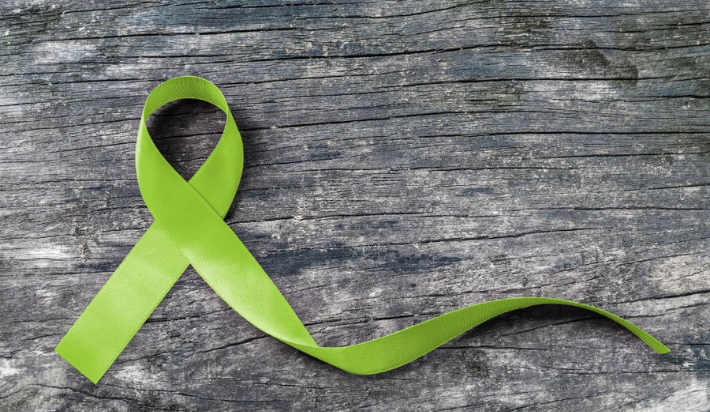“What mental health needs is more sunlight, more candor, and more unashamed conversation.” – Glenn Close
In June 2020, the CDC published a study that revealed that one in four Americans between 18 and 24 reported having seriously considered suicide in the previous 30 days. Let that sink in for a moment. It should chill us to the bone.
In December 2020, the American Council of Education reported that nearly 70 percent of college presidents said that student mental health ranks among their top concerns. By March 2021, that number had risen to 96%, according to a survey of presidents conducted by Inside Higher Ed. A Boston University study published in February 2021 further revealed that 83 percent of college students said their mental health had negatively impacted their academic performance within the past month, and two-thirds of college students are struggling with loneliness and feeling isolated.
While we hope that vaccinations and a return to “normal” over the next few months will alleviate some of these numbers, the reality is that American mental health is likely declining for reasons beyond the pandemic. The impact of social media, financial burdens and inequality, and a focus on success vs. intrinsic values are just a few of the potential causes for the rise of mental disorders. There is good news, however. Mental health awareness has increased, and the stigma around mental health disorders is declining. Ninety-four percent of students in BU’s study said that they wouldn’t judge someone for seeking mental health assistance.
To honor May Mental Health Awareness Month, my daughter agreed to talk about her own mental health journey and her struggles during this last year, her first year in college. She’s a role model for how we can remove the stigma of discussing these difficult topics and foster an environment of compassion and a greater understanding of the complexity of these conditions.
Gina is nineteen years old and just completed her freshman year at the University of North Texas.* She completed her senior year in high school at the start of the pandemic, and we had long discussions in summer 2020 about whether she should move ahead with her college career as planned. Together, we decided she would leave home in Austin and embark on her college journey to earn a degree in education. Yes, readers, she wants to be a teacher! I’m so proud she’s chosen to pursue such a noble profession.
But I was fearful.
All parents experience fears when sending their children off to college. For parents of a child with mental health disorders, the fear is compounded. Gina was diagnosed with social anxiety disorder and depression when she was just fifteen years old.
The social anxiety disorder came first. Beginning at the age of thirteen, it went undiagnosed and unaddressed for two years. The anxiety and inability to cope in social situations eventually led to depression. These two disorders often travel together, and they can be missed in teens because their behavior is already mystifying. Our family was also going through a difficult period with the back-to-back deaths of my parents, Gina’s beloved grandparents, after long illnesses and suffering. I mistook her symptoms for grief and figured we would both eventually get through the pain. She, highly attuned to my grief and exhaustion from caregiving, couldn’t bear to lay more on me and suffered in silence.
We were lucky. Eventually, Gina came to me (I’m a single mom) and said, “I’m not well. I need to talk to someone. I have really bad thoughts.” I am eternally grateful that she felt safe and secure enough to come to me. I reacted immediately because there is a history of mental health disorders in our family that had horrific outcomes. Gina got the help she needed and continues to adhere to a treatment plan that combines therapy and medication, a protocol that might last a lifetime depending on breakthroughs in this area.
With this context in mind, here is what Gina wanted to share with you about her experience as a college student managing and coping with mental health disorders.
My Conversation with Gina
TERESA: Thank you for sharing your story with our Apogee readers, Gina.
GINA: You made me do this. Just kidding, whoever is reading this.
[I will admit I bribed her with takeout.]
TERESA: You finished high school during the pandemic. What was it like starting your freshman year during the pandemic?
GINA: It was wacky. I didn’t know what to expect, and I still don’t really know what my freshman year was supposed to look like. I can’t compare it the way a sophomore or upperclassman could. I do feel like I didn’t get to know my professors at all, and many of them probably don’t know my name and face together. Aren’t you supposed to get to do that in college, have great relationships with professors, and discover mentors? That was sad. I hope things are more normal this coming fall so that I can experience what it should be like.
TERESA: Were your mental health disorders exacerbated by the pandemic while you were on campus?
GINA: Yes, my depression was exacerbated for sure because of the isolation. I was very lonely, and while I’m an introvert and have social anxiety disorder, I need and want human contact.
I experienced more social anxiety too, but I don’t feel that was due to the pandemic. I believe I would have had that increase in anxiety no matter what. The biggest driver of having more social anxiety when I got to college was getting my meals. I was now in a residence hall and had to go to dining halls for all my meals.
It’s hard for people who don’t suffer from social anxiety to understand this, and I don’t know how to explain it. But it can be debilitating to be in new social situations. My fears of “messing up,” of being judged, of humiliating myself in the dining hall…they were profound. Getting in the wrong line, making people behind me wait while I figured out what to order, actually asking the dining hall staff for what I wanted – all of it was beyond overwhelming and painful.
The increase in anxiety then fed the depression that was growing because of the isolation. My progress with therapy and medication the previous three years seemed to unravel in a matter of weeks. By October, as you know, I was in Denton one week, home the next week for that entire month.
TERESA: How did you manage your anxiety and depression during September and October?
GINA: Besides coming home for a week every other week? I continued my meds and the therapy with my regular therapist in Austin – Yay for Telehealth! They finally did it! – and I saw a counselor through UNT’s mental health services sometimes to supplement my regular sessions a few times.
TERESA: How did you find out about those services at UNT? Were there posters, or did you get an email from the school or see a social post about them?
GINA: I found them online searching the UNT website. I didn’t see any signs or posters about it. I don’t do social media except for a little Instagram, but I don’t recall seeing anything there.
TERESA: Describe your experience with those services and whether there’s anything you think your school could do better.
GINA: It wasn’t for me, but I think it could be beneficial for other people. I’ve been dealing with these issues for a while, so I felt like I was treated like a first-timer or a child, not as an adult who knows what’s wrong and has been working on it for a long time.
I think it’s great that UNT has these services, and they probably helped a lot of people the last year who may have been experiencing mental health issues for the first time. I think UNT is doing all they can around these issues right now. I can’t think of anything they could do better except maybe the counselors could get more history upfront.
TERESA: You ended up coming home in early November and staying home for the end of the fall semester and your entire spring semester. You stayed enrolled and did all your classes online, and we got a waiver from housing for the spring due to your mental health disorders. Can you tell our readers why you came home for good?
GINA: Well, the social anxiety in the dining halls became too much to bear. I started going to the grocery store but only so much could fit in my tiny fridge. I would also order takeout because I didn’t want to go to the dining halls for my meals. I lost a lot of weight. No Freshman Fifteen for me! But the social anxiety became so great that one day I made cuts on my thighs to cope. That’s when I called you to come get me.
TERESA: It can be hard to understand, but people who cut themselves sometimes do it because it actually makes them feel better. While self-injury may bring a momentary sense of calm and a release of tension, it’s usually followed by guilt and shame and the return of painful emotions. Although life-threatening injuries are usually not intended, with self-injury comes the possibility of more serious and even fatal self-aggressive actions.
I got in the car and headed to Denton within an hour.
Break the Stigma
Gina came home in early November 2020, and her doctor increased her medication dosage and the frequency of therapy. Her improvement was almost immediate, and she completed the fall semester with a 3.2 GPA. She thrived in the spring semester at home, taking a full 15-hour load of online classes and completing the semester with a 3.8 GPA while also tutoring a school-age neighbor two hours per day.
We are now preparing for her return to campus in Fall 2021 and have worked through how to make that a successful transition. Am I afraid? Absolutely. But because the stigma is removed, I know my daughter will communicate honestly about how she’s doing.
We are very lucky. We have the resources and the experience to know what to do. So many college students and their families do not, and my heart aches for them. Our story is just one of thousands – if not hundreds of thousands – of stories of mental health disorders in college students. College campuses are crucial settings where mental health awareness, prevention, programs, and treatment can make a huge difference in people’s lives. Let’s not fall into the trap of thinking mental health issues will fade because the pandemic has become more manageable, and we’re returning to “normal.” Higher ed must continue to keep these issues top of mind, properly resourced, and free from shame.
Break the stigma. It’s incredibly important to create an environment for anyone to be able to speak up and seek help. I shudder to think how things could have been for us if Gina hadn’t felt she could speak up and ask for help when she was fifteen.
Immediate assistance is available for those in need of help by calling the National Suicide Prevention Lifeline at 1-800-273-TALK or by calling 1-800-662-HELP.
*Disclosure: The University of North Texas is an Apogee client.




